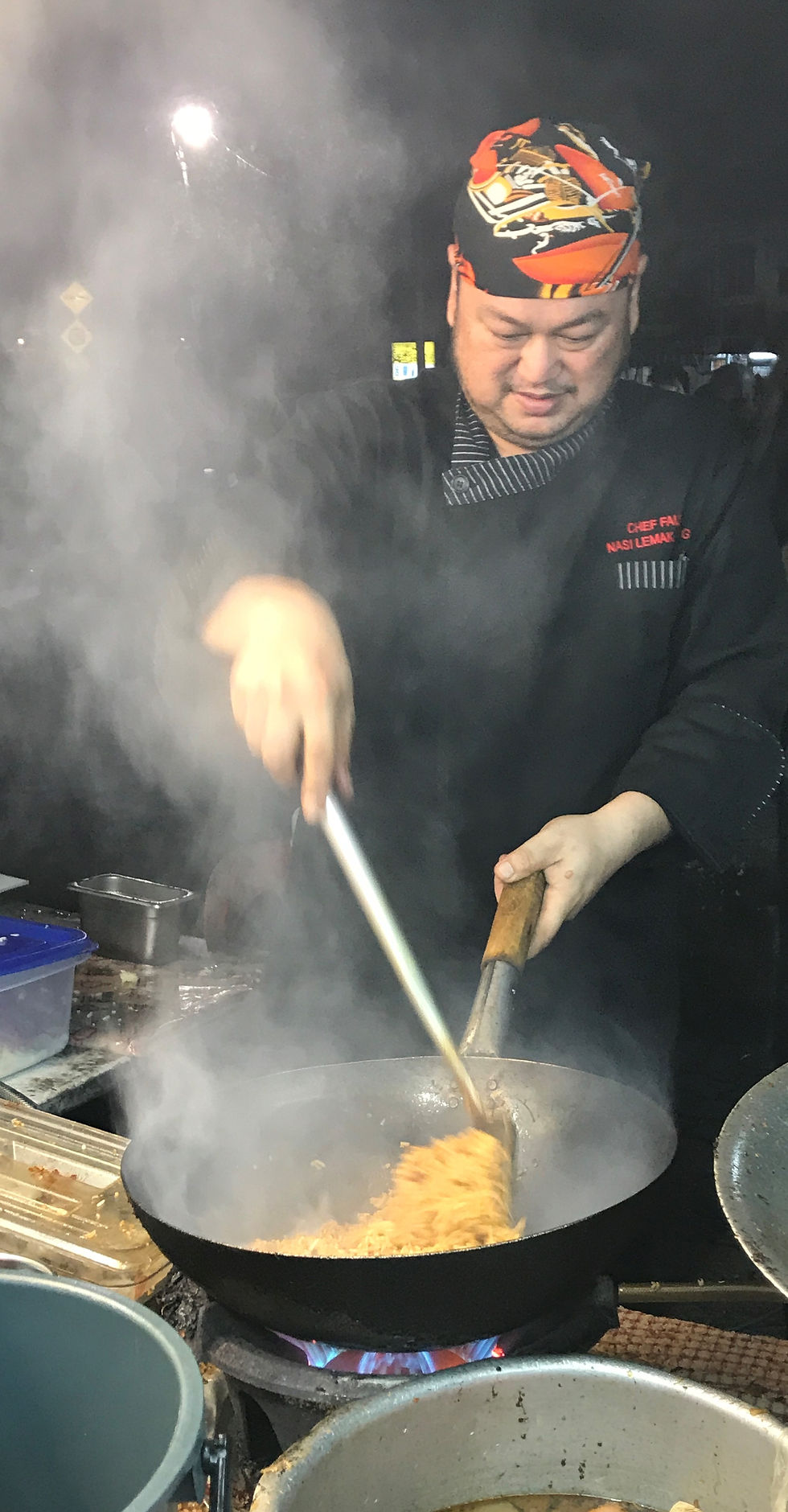A Fruitful Lunch
- meikuan4
- Sep 28, 2020
- 3 min read
Malaysians love odorously pungent foods. We love our petai, durians and sambal belacans. The stronger the better, for more kick as we say.

But every now and then we also claim we like to eat healthy and throw in a portion of vegetables or a few slices of fruits into our meals. But not too often, because healthy food has no kick to it.
So Malaysian fruit rojak (because it is an understatement to call it a mere fruit salad) appears to provide the best of both worlds as it is at once both odorously pungent while being loaded with more than enough fibre. It also has lots of colour under the thick sauce, which has something to do with nutrition.
I have no doubt there are healthy eaters who will harangue me about the amount of sugar that goes into the mysterious dark sauce and to them, I say the focus is on the fibre. Lots of fibre makes for a happy gut and a happy gut is usually a healthy gut.

The rojak makes for a tasty lunch
Fruit rojak is one of those things that can be eaten anytime from brunch onward, as a light lunch or a substantial afternoon snack. Or as a day after meal that follows a night of binging because it is so pungent, sweet, salty, spicy and satisfying that it almost feels like a proper meal.
No two mouthfuls are the same because each stab at it brings up a different combination of the ingredients that slightly alters the taste and mouth feel.
Everyone has their own go to fruit rojak seller and there are many, but one particularly well known one whose reputation is well deserved is from the Yoon Yik Wan rojak van in Taman Tun Dr Ismail.

Several options are available for the rojak
The white 20-year-old van has been parked on the road somewhere near the 7-11 and Yong Len coffee shop at the same location for over two decades.
From the moment Loke Kam Heng secures his usual parking spot and his wife Wan Yoon Yee opens up the panels, customers can be seen lining up to order. Because parking is difficult to find in the area, those in the know will call ahead and drive by to pick it up.

The couple use a variety of ingredients with diagonally sliced barely ripe papaya for the crunch, wedges of sour green mango for the pucker, guava for some bulk, pineapple for a sweet bite and kangkong because mothers insist we must eat green vegetables.
Complementing the already complex mix of textures of their northern, Penang style version are chopped roasted peanuts, home-made prawn crackers and chunks of yau char kwai. Slices of dried cuttlefish can be added as an option for another dimension of salty umaminess.

With only a large umbrella for shade, Wan slices, dices and blends each order in a decade old porcelain bowl in a size and colour that only rojak sellers seem to have and she has little time to chat.
On most days, they are at their usual spot by 1 p.m and will be there till the early evening although Wan’s day begins much earlier when she heads to the market.
“Customers like our rojak because we put a lot of ingredients in it, but if you want to eat it to lose weight, then I suggest reducing the sauce,” says Wan.
But it is the sauce that brings everything together and it is based on a recipe Wan’s father learnt from his sifu over 30 years ago.
While it has been altered slightly over time, the three main components are shrimp paste, an optional chili paste and a home-made blend of taucu (fermented bean paste), palm sugar, brown sugar oyster sauce, chicken stock and flour.
The second-generation fruit rojak seller deftly scoops it from a metal container in proportions that have been honed by years of experience and training from her father, who is still selling his version at another location.
Some of her regulars also ask for the secret cili padi sauce, which is only added with a knowing head nod, to ramp up the heat for even more kick.
While Wan is busy with the rojak, Loke will be busy toasting home-made tofu puffs that are stuffed with shredded cucumber and doused with the signature sauce or added to the fruit rojak itself.
The van is pretty much an institution in the area and one of things that Malaysians returning from overseas must eat, according to Wan.
“Everyone eats it. It is multiracial. Even westerners like it.”





Comments